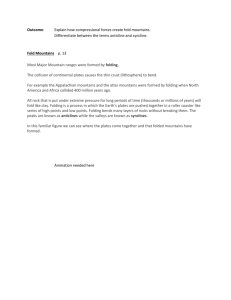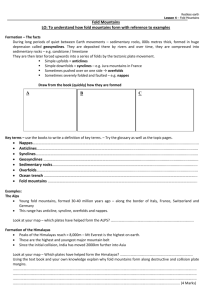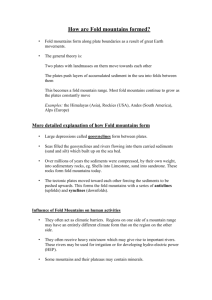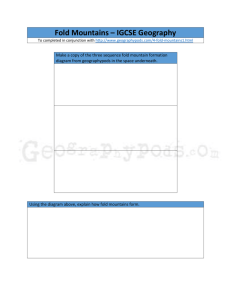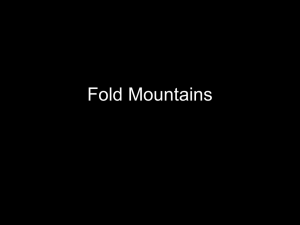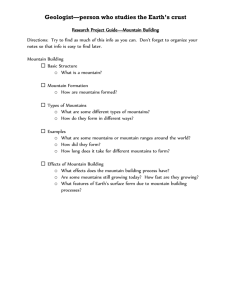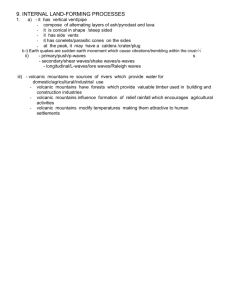FOLD MOUNTAINS HOW DO MOUNTAINS FORM??? (Write down
advertisement
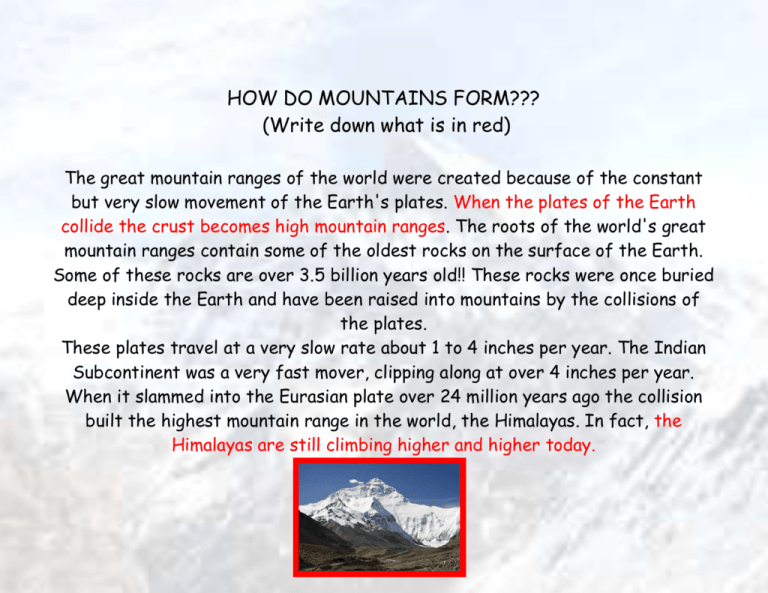
FOLD MOUNTAINS HOW DO MOUNTAINS FORM??? (Write down what is in red) The great mountain ranges of the world were created because of the constant but very slow movement of the Earth's plates. When the plates of the Earth collide the crust becomes high mountain ranges. The roots of the world's great mountain ranges contain some of the oldest rocks on the surface of the Earth. Some of these rocks are over 3.5 billion years old!! These rocks were once buried deep inside the Earth and have been raised into mountains by the collisions of the plates. These plates travel at a very slow rate about 1 to 4 inches per year. The Indian Subcontinent was a very fast mover, clipping along at over 4 inches per year. When it slammed into the Eurasian plate over 24 million years ago the collision built the highest mountain range in the world, the Himalayas. In fact, the Himalayas are still climbing higher and higher today. 1 of 6 FOLD MOUNTAINS DEFINITION Fold mountains are mountain ranges that are formed when two of the tectonic plates that make up the Earth's crust push together at their border. The extreme pressure forces the edges of the plates upwards into a series of folds. Fold mountains are created through a process called "orogeny." An orogenic event takes millions of years to create a mountain range because tectonic plates move only centimeters every year. Fold mountains are the most common type of mountain on Earth. 2 of 6 FOLD MOUNTAINS DIAGRAM OF PLATES 3 of 6 FOLD MOUNTAINS EXAMPLE of Fold Mountains: The Zagros Mountains are the largest mountain range in Iran and Iraq. 4 of 6 FOLD MOUNTAINS EXAMPLE of Fold Mountains: Folded and faulted rocks at the Lizard, in Cornwall, England. Large scale sideways compression, like you will see in the box demonstration. 5 of 6 FOLD MOUNTAINS TRY THIS AT HOME Step 1 Build up several flat layers of dry sand and flour in an empty transparent box, with a piece of board standing in one end. Do not fill the box more than half full. Step 2 Very carefully, push the board across the box, so that it begins to compress the sand and flour layers, stopping at intervals to see the result. Usually, the layers buckle up into a fold, and some of them become overturned. 6 of 6
